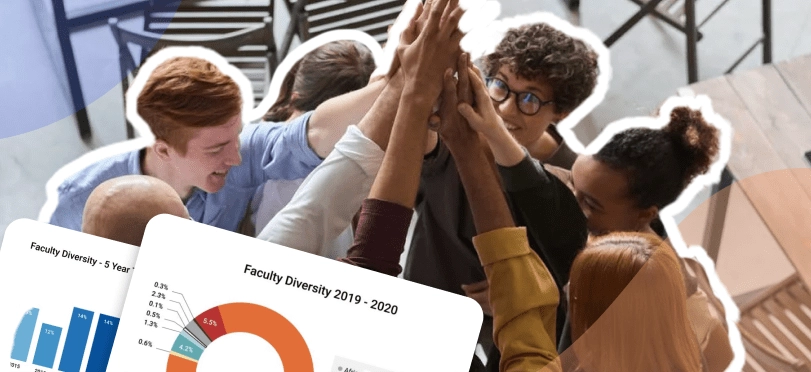Diversity Beyond Metrics and How HR Tech Can Help
Here's how you can give diversity in your organization the attention and support it deserves
by Elle Mason - March 8th, 2022
Are you tired of hearing about companies that talk the talk but don't walk the walk when it comes to diversity and inclusion? It seems like every organization out there is touting its commitment to Diversity, Equity, and Inclusion (DEI) these days, but how many of them are actually putting in the work to create an inclusive environment?
Too often, businesses make the mistake of focusing solely on “diversity in metrics” and increasing the numbers of underrepresented groups in the workforce, but that's only part of the equation. They believe by simply hiring more people from diverse groups, they've done enough to call themselves a diverse and inclusive organization.
But as DEI has grown in importance, there’s been a shift from a sole focus on numbers and compliance towards talent acquisition and people analytics more broadly. And this shift makes sense - after all, hiring minorities (whether racial or ethnic, gender, religion, age, etc.) but not ensuring that the environment doesn’t cause them to feel a sense of exclusion or a lack of belonging isn’t diversity and inclusion. And inclusion is what makes DEI efforts truly stick.
This article will detail three key areas that need to be addressed in any DEI initiative – and how HR technology can help you meet your goals.
Sourcing New Talent
How do people discover opportunities at your organization? Who is the language in your external communications targeting or excluding? What presence, branding, or awareness-building strategies do you have at events or groups that represent diverse voices? Creating a funnel that can ensure that the right potential candidates are discovered – or that they discover you – is one of the most critical steps in building DEI at your organization.
If you don’t know that they exist and they don’t know about you, how can you ever get them through the door? Some HR technologies seek to solve this problem by offering opportunities for employers to conduct searches based on particular attributes, e.g., gender or race, in an effort to actively seek out groups that have been previously marginalized and discriminated against. Additionally, there are technologies designed to check your job advertising language and web copy for inclusive language.
Selection and Interviewing
This is a broad area but an important one. How are people perceived and assessed once they walk through the door? Traditional systems have been suffering from documented bias in this space for a very long time. Research has suggested that humans are biased in employee selection in ways that mirror real-world/outside-of-work bias, including discrimination based on someone’s name (on the basis of perceived gender, perceived race or ethnicity, and more), discrimination based on their zip code (perpetuating classism against applicants who live in certain neighborhoods), and bias towards (or against) resume details like particular schools, team or club memberships, and beyond.
There’s been a great deal of advancement in HR technology focused on equitable hiring practices in recent years. Examples include technology that delivers resumes without names, photos, nationality, or other identifying details; a technology that reimagines the selection process as an assessment or aptitude-driven process rather than relying on personal interviews and one person’s judgment.
Onboarding and Retention
This is perhaps the most critical, but often missing piece of the puzzle. Once you’ve hired a more diverse team, how do they fare in your organization? Do they receive equity in pay, development, and promotional or advancement opportunities? Are they integrated and welcomed into the team and broader organizational culture?
This area represents the most opportunity as it spans onboarding into the organization, ongoing development within the organization, and employee retention and engagement. HR technologies in this area can span everything from rewards and recognition systems to pulse check tools. But specifically, here are three ways that GoCo can help:
Inclusive DEI-Focused features – This can mask legal sex on profiles, remove the legal sex requirement in onboarding, rename preferred pronouns, expand pronouns options in GoCo, easily add new company holidays, and ensure that you’re using preferred names in email communication.
Anonymous Workflows for Sensitive Communication - Managers/employers can have anonymous conversations and review feedback around diversity efforts without exposing employee identities. This creates an opportunity for HR to truly hear employee concerns.
Diversity training & agreements housed in GoCo - With GoCo’s streamlined document management feature, HR managers can include training videos, diversity documents, and policies all in digital form within GoCo to ensure all employees are well-versed and educated on diversity efforts as well as anti-discrimination agreements.
Recommended Posts
Creating a Reasonable Accommodation Process
Blog Articles
Search...
Product
GoCo
Resources
Articles
eBooks
Webinars
Customer Stories


